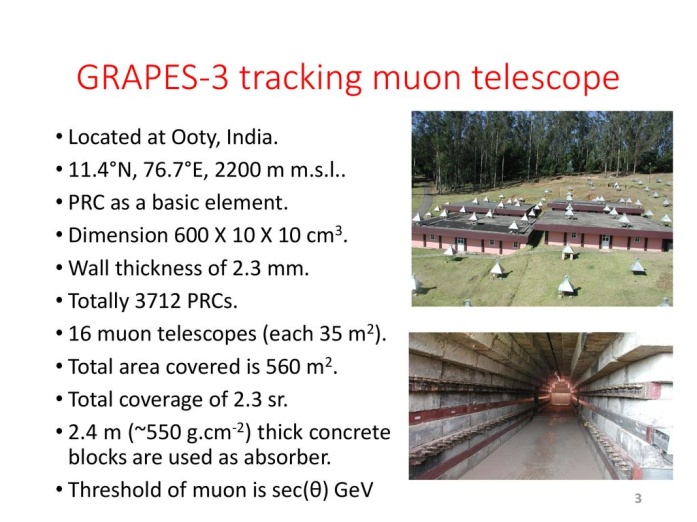Category: Material Science
Ooty’s muon detection facility measures potential of thundercloud
24, Mar 2019

For the first time in the world, researchers at the GRAPES-3 muon telescope facility in Ooty have measured the electrical potential, size and height of a thundercloud that passed overhead on December 1, 2014.
At 1.3 gigavolts (GV), this cloud had 10 times higher potential than the previous record in a cloud. This is not because clouds with such high potentials are a rarity, but rather, because the methods of detection have not been successful so far.
Cloud structure
- Clouds have negative charges along their lower side and positive charges on top and can be several kilometres thick.
- If balloons are used to measure the potential difference between the top and bottom, they will take hours to traverse the distance.
- Unfortunately, thunderstorms last only for about 15-20 minutes, and this method fails.
Threshold of detection
- Muons and other particles are produced when cosmic rays bombard air particles surrounding the earth.
- The muons produced can have positive or negative charge.
- When a positively charged muon falls through a cloud, it loses energy. If its energy falls below 1 giga electron volt (GeV), which is the threshold of detection of the GRAPES-3 muon telescope, it goes undetected.
- On the contrary, a negatively charged muon gains energy when falling through the cloud and gets detected.
- Since there are more positive than negative muons produced in nature, the two effects don’t cancel out, and a net change in intensity is detected.
Clue to puzzle
- This method can be used to solve a 25-year-old puzzle of terrestrial gamma ray bursts huge flashes of light that accompany lightnings, but which have not been explained in theory until now.
GRAPES-3 Experiment:
- The GRAPES-3 experiment at TIFR’s (Tata Institute of Fundamental Research) Cosmic Ray Laboratory in Ootacamund in Tamil Nadu is getting upgraded to detect solar storms.
- GRAPES-3 (Gamma Ray Astronomy PeVEnergieS phase-3) experiment had detected the effect of a solar storm that hit the earth in June 2015.
- GRAPES-3 has an important role in understanding the propagation of storms from the L1 point (Lagrange point 1) to its impact on the Earth.
- The upgraded detector will have an increased coverage and improved capacity to determine the direction of incident cosmic rays.
- It will play a major role in getting precise information about the propagation of storms in the last million miles (from the L-1 point) of their journey from the Sun to the earth.

muon
- The muon is an elementary particle similar to the electron, with an electric charge of −1 e and a spin of 1/2, but with a much greater mass.
- It is classified as a lepton.
- As is the case with other leptons, the muon is not believed to have any sub-structure that is, it is not thought to be composed of any simpler particles.
- The muon is an unstable subatomic particle with a mean lifetime of 2.2 μs, much longer than many other subatomic particles.







